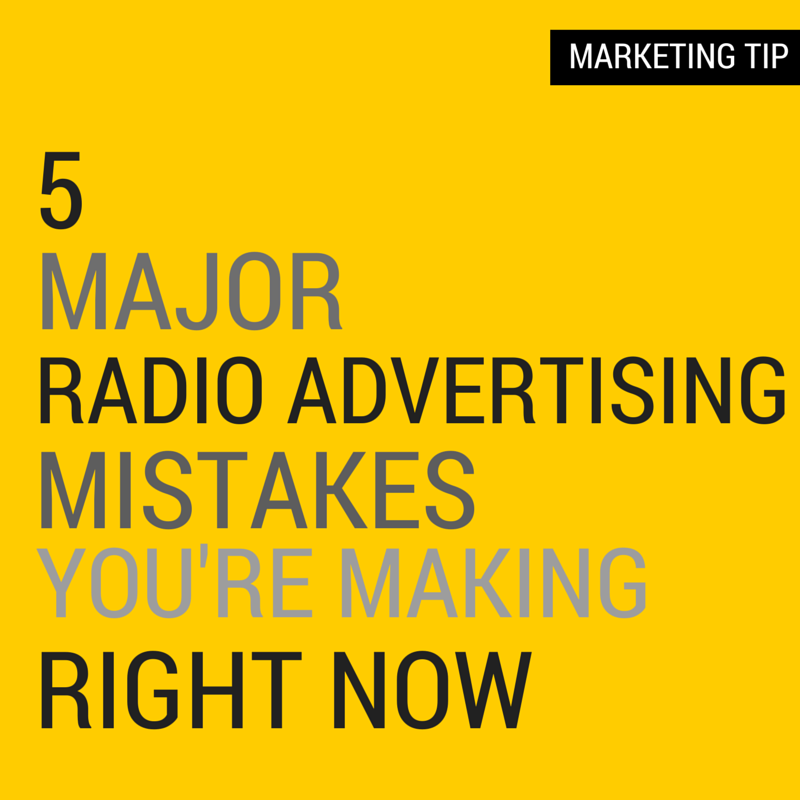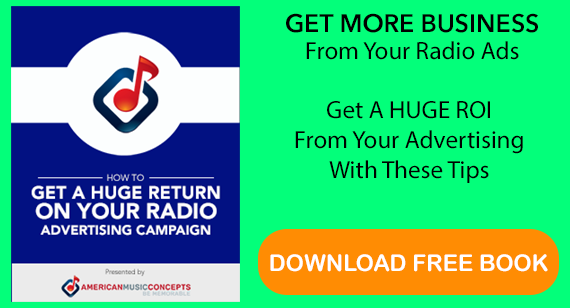
03 Mar 5 Major Radio Advertising Mistakes You’re Making Right Now
Radio advertising is a great way to attract the attention of a targeted local customer base. When radio advertising campaigns follow some simple rules they are more effective. Many radio ads are ineffective because they simply do not give a compelling reason for the customer to contact the business. Here are five guidelines to follow in order to avoid the most common mistakes made in radio advertising.
1. Do Not Use Complicated Contact Information
Since most radio listeners will be driving in a car, or at work, it is unrealistic to expect them to write down a telephone number. Using a telephone number that is difficult to remember is a waste of valuable radio advertising words. Repeating a difficult to remember telephone number multiple times does not help.
If one feels compelled to use phone numbers, the best way is to make them part of a jingle and use a phone number that is really easy to remember, such as a tune that sings 1- 800 Plumber. Most ads do better without using telephone numbers, because the goal is to get customer to come to the business, not to call the business.
Street address numbers are also ineffective when they are difficult to remember. Better to say, “We have hot freshly baked bagels waiting for you at Joe’s bakery on the downtown corner of First and Main,” than to say “Come to 12539 Suite #2345A Main Street.”
Websites that are not easy to spell correctly from hearing it are not good to use. This will only frustrate the customer when they misspell the website and then cannot find it.
2. Not Enough Frequency of Ads
It is estimated that in order to create a response, a person needs to hear a radio ad somewhere between six to ten times. Unless the ads run frequently and for a long enough period, the advertising money is wasted because the response is too low. Most radio advertising campaigns that are effective last for at least a minimum of 18 weeks.
3. Wrong Airtime and Incorrect Budget
Typically, radio stations charge a premium for prime time, which is also called “drive time” advertisements. Radio campaigns may be more effective with greater exposure during non-prime time periods. Estimates are that about 80% of those listeners that would hear a radio ad during prime time will be listening at other times as well. The cost of non-prime time ads is up to 80% less than prime time ads.
The key is to have enough budget, runs the ads frequently, and advertise for extended periods to generate the most cost-efficient responses.
4. Overuse of Clichés and Meaningless Discounts
Customers have been bombarded by advertisers using the same old worn-out clichés, such as “The Lowest Prices in Town,” “Friendly Professional Help,” or “Everything is on Sale.” There are many of these clichés and they simply do not work at all. A better idea is to figure out why a customer has a compelling special reason to visit the business
Special does not mean discounts, or asking the customer to do something extra, like “Mention this radio ad and get 5% off.” Discounts, especially small ones, tend to cheapen the value of the offering. Better to say, “Enjoy a free cup of our delicious freshly-brewed coffee with every bagel purchase,” than to say “10% off all bagels.”
5. Choosing the Wrong Radio Station
The idea is to saturate the local market with a radio advertising campaign where customers will hear the advertisements, not to run ads on a favorite radio station of the business owners. Check the radio stations demographics to make sure it contains potential customers for the business and consider running advertisements on more than one radio station to capture different audience segments.
By following these simple rules and avoiding the most common mistakes, radio advertising can be an effective part of local marketing efforts.



No Comments